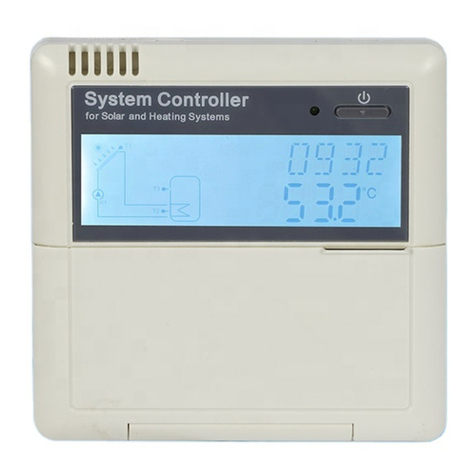
http://www.sunflower-solar.com/
Version11.03 2
Subject to change 2011 SUNFLOWER SOLAR
SFB-AL (SF-B) series Installation Manual
All-glass Evacuated Tubular Solar Collector with Heat Pipe
Contents
1. SOLAR COLLECTOR SIZE AND WEIGHT............................................................................................................................. 3
2. HOW TO TRANSPORT AND CARRY IT................................................................................................................................. 3
3. INSTALLATION............................................................................................................................................................................ 4
3.1 UNPACK AND INSPECTION ...................................................................................................................................................... 4
3.2 FIX THE FRAMES AND MANIFOLD BOX........................................................................................................................................ 5
3.2.1 Put Side Rails
................................................................................................................................................................... 5
3.2.2 Fix the Manifold
............................................................................................................................................................... 6
3.3 FIX THE HORIZONTAL BAR............................................................................................................................................................ 8
3.4 FIX SOLAR COLLECTOR ON YOUR SLOPING ROOF........................................................................................................................ 9
3.4.1 Sloping roof
....................................................................................................................................................................... 9
3.4.2 Flat roof
............................................................................................................................................................................ 12
3.5 INSTALL THE TUBES .................................................................................................................................................................... 14
4. LIGHTNING PROTECTION..................................................................................................................................................... 16
5. HOW TO CONNECT COUPLE OF COLLECTORS? ............................................................................................................. 16
6. CONNECTION OF THE COLLECTOR FIELD TO THE HEAT TRANSFER CIRCUIT................................................... 17
7. DIMENSIONS OF PIPE CONNECTIONS............................................................................................................................. 18
8. HEAT TRANSFER MEDIA........................................................................................................................................................ 19
9. PRECAUTIONS........................................................................................................................................................................... 19
10. MAX. WORKING PRESSURE............................................................................................................................................. 19
11. PRESSURE DROP.................................................................................................................................................................. 20
12. INSTALLATION ANGLE....................................................................................................................................................... 20
13. WIND AND SNOW ACCUMULATION.............................................................................................................................. 20
14. MAINTENANCE REQUIREMENTS.................................................................................................................................... 20
14.1 CLEANING................................................................................................................................................................................. 20
14.2 LEAVES...................................................................................................................................................................................... 20
14.3 BROKEN TUBE .......................................................................................................................................................................... 21




























